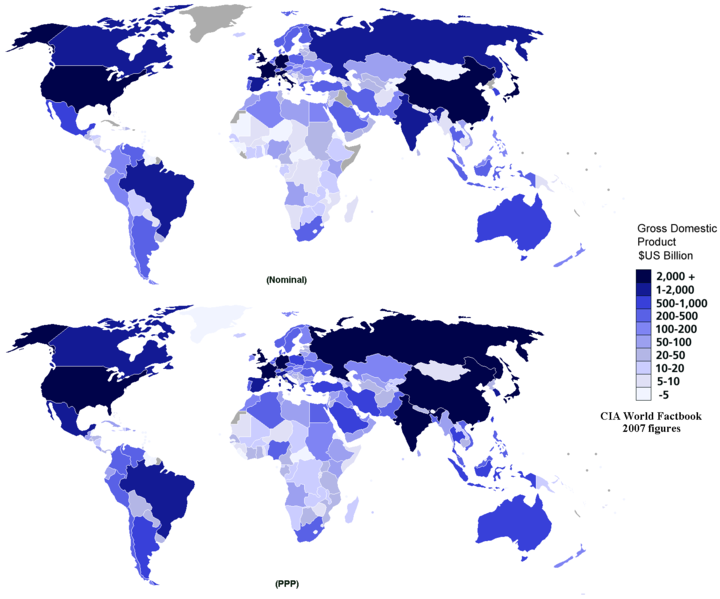Which Economies Will Be Top by 2015? by Thinesh Reddy
In the last few years we have also seen India overhaul Germany, and Russial and Brazil overtake the UK.
Indeed, according to current forecasts, by 2015 India will have overtaken Japan to be the third most important economy in the world, and Mexico will have entered the Top Ten - and kicked Italy out of that exclusive club,
To give us a better global view, this map from the CIA World Factbook will help to illustrate the differences between calculating world GDP figures on a PPP or nominal basis.


A sectoral analysis of country GDP allows us to understand the paradigm shift now occurring within most world economies. Growth patterns generally show a shift from agriculture to manufacturing and ultimately to the services sector.
The following table shows the percentage of GDP contributed by each sector in the top ten economies of the world:
| Country | Contribution of Services Sector in GDP (estimated for 2007) | Contribution of Industrial Sector in GDP | Contribution of Agricultural Sector in GDP |
| United States of America | 78.5% | 20.6% | 0.9% |
| China | 39.5% | 49.5% | 11% |
| Japan | 73.3% | 25.2% | 1.5% |
| India | 55% | 28.4% | 16.6% |
| Germany | 69.5% | 26.9% | 0.9% |
| United Kingdom | 75.5% | 23.6% | 0.9% |
| Russia | 56.3% | 39.1% | 4.6% |
| France | 77.3% | 20.7% | 2% |
| Brazil | 64% | 30.8% | 5.1% |
| Italy | 69.3% | 32% | 5% |
The growth rate of these economies is also an important factor, and is directly related to the overall development of a specific economy. Group of Seven Countries such as the United States, France, Italy and the United Kingdom all typically have smaller growth rates - usually in the region of about 2% per annum.
By contrast, emerging economies such as India and China have growth rates of around 8% to 11%, while the ‘new’ emerging economies may experience even more blistering growth rates. Developed countries have already reached a saturation point, and thus expand less than emerging economies, where possibilities and opportunities are ripe, investors are ready to take risks, and consumers are demanding more goods and services than ever before.

No comments:
Post a Comment